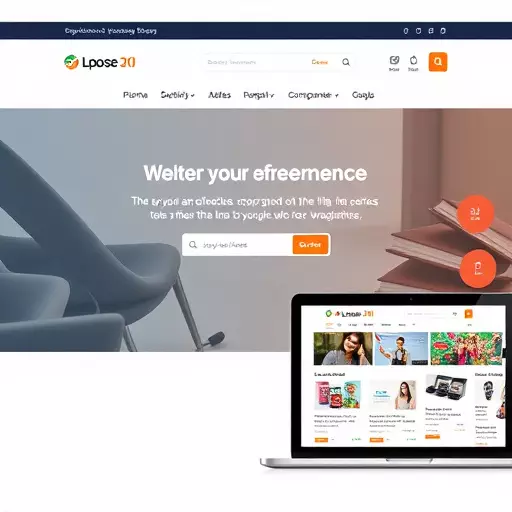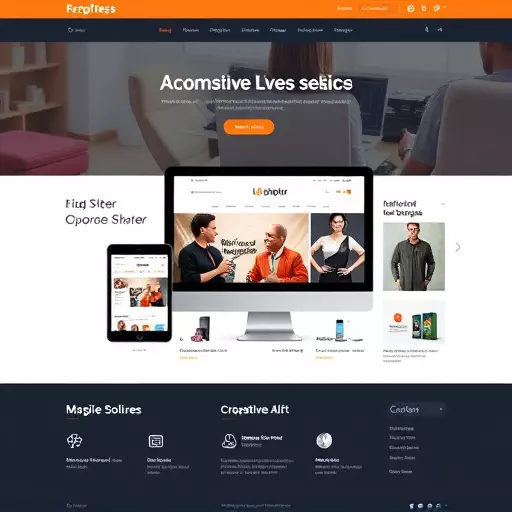Custom WordPress development harnesses a versatile platform for dynamic websites, from user-friendly blogs to complex e-commerce sites. It leverages WordPress's global community, extensive theme library, open-source nature, plugins, and themes to create tailored solutions surpassing stock capabilities. Key aspects include integrating responsive design for optimal user experiences across devices, transforming standard themes into powerful platforms, and enhancing e-commerce functionality through custom features and third-party integrations. Regular maintenance ensures compatibility, security, SEO optimization, and improved user experiences, ultimately driving conversions and boosting online sales success.
Custom WordPress development opens up a world of possibilities for businesses aiming to create unique, high-performing online platforms. From visually stunning responsive designs that adapt to any device, to seamless e-commerce functionality and advanced feature integrations, this comprehensive guide explores the full spectrum of custom WordPress development services.
Discover how tailoring your WordPress theme can elevate your online presence, offering a rich user experience while ensuring ongoing maintenance and updates for long-term success.
- Understanding Custom WordPress Development: A Comprehensive Overview
- Why Choose Customization for Your WordPress Website?
- Building Responsive WordPress Design: Best Practices and Trends
- E-commerce on WordPress: Creating a Seamless Shopping Experience
- Integrating Advanced Features: Enhancing Your WordPress Site's Functionality
- Maintenance and Updates: Ensuring Longevity for Your Custom WordPress Theme
Understanding Custom WordPress Development: A Comprehensive Overview

Understanding Custom WordPress Development involves delving into a powerful and versatile platform designed to create dynamic websites. WordPress, renowned for its user-friendly interface, offers a robust framework for building everything from basic blogs to complex e-commerce WordPress sites. Its global community contributes to an extensive library of ready-made WordPress themes, catering to diverse design needs and preferences.
Custom development takes this further by allowing experts to craft tailored solutions that exceed stock capabilities. This includes incorporating responsive WordPress design, ensuring websites seamlessly adapt to various screen sizes, enhancing user experience on both desktop and mobile devices. By leveraging WordPress’s open-source nature and its vast ecosystem of plugins and themes, developers can build custom features, integrate third-party services, and create unique functionality, transforming a standard WordPress theme into a powerful e-commerce platform or a sophisticated corporate site.
Why Choose Customization for Your WordPress Website?

In today’s digital landscape, a website is often the face of a business or organisation online. Customisation offers a unique opportunity to create a WordPress site that perfectly aligns with your brand identity and user experience expectations. While pre-made WordPress themes are readily available and offer a quick start, custom development allows for a more tailored approach. It enables businesses to stand out from the crowd by creating an exclusive online presence, ensuring their website design reflects their unique selling points and resonates with their target audience.
For e-commerce WordPress sites in particular, customisation is essential. Responsive WordPress design, adapted to various devices and screen sizes, ensures a seamless shopping experience for customers on desktops, tablets, or mobile phones. Custom functionality can be integrated to streamline processes like product filtering, search optimisation, and checkout procedures, ultimately driving conversions and contributing to the success of online businesses.
Building Responsive WordPress Design: Best Practices and Trends

In today’s digital landscape, a visually appealing and functional Responsive WordPress Design is crucial for engaging users across various devices, from desktops to mobile phones. When developing custom WordPress themes, it’s essential to follow best practices like using a mobile-first approach, implementing media queries for flexible layouts, and optimizing images for faster loading times. Additionally, ensuring touch gestures are accommodated enhances the user experience on smaller screens, making navigation intuitive for e-commerce WordPress sites aiming to boost sales.
Staying up-to-date with trends is equally vital. Modern Responsive designs often incorporate minimalist aesthetics, subtle animations, and dynamic content that adapts seamlessly to different screen sizes. Utilizing advanced CSS techniques like Flexbox and Grid systems allows developers to create fluid layouts that respond gracefully, ensuring your WordPress themes remain competitive in a bustling online market. For e-commerce sites in particular, this translates into increased customer satisfaction, higher conversion rates, and a stronger online presence.
E-commerce on WordPress: Creating a Seamless Shopping Experience

WordPress has revolutionized the way we build and manage websites, especially for e-commerce platforms. With its vast library of themes and powerful customization tools, creating a seamless online shopping experience is now within reach for businesses of all sizes. A well-designed WordPress theme can transform any website into an engaging e-commerce site, offering users a responsive and intuitive browsing experience.
By leveraging the platform’s flexibility, developers can craft dynamic and visually appealing stores that adapt beautifully to different screen sizes. This ensures that customers, whether they’re on desktops or mobile devices, enjoy a consistent shopping journey. With WordPress, adding product pages, categories, filters, and a secure checkout process becomes straightforward, allowing businesses to focus on curating their product offerings and providing excellent customer service.
Integrating Advanced Features: Enhancing Your WordPress Site's Functionality

Custom WordPress development allows for the seamless integration of advanced features that significantly enhance website functionality. By tailoring your site’s code and design, you can create dynamic elements such as interactive forms, sophisticated sliders, or custom content types, elevating user experience. This approach is particularly beneficial for complex projects like E-commerce WordPress sites, where a responsive design ensures a smooth shopping journey across various devices.
Whether you’re building a corporate website or an online store, incorporating these features showcases your site’s professionalism and versatility. Responsive WordPress design, for instance, adapts content to different screen sizes, ensuring that your message reaches every audience member consistently. This attention to detail not only improves usability but also contributes to better search engine optimization (SEO), making your WordPress themes more visible and attractive to potential customers or clients.
Maintenance and Updates: Ensuring Longevity for Your Custom WordPress Theme

Maintaining and regularly updating your custom WordPress theme is paramount to ensure its longevity and optimal performance. With the platform’s frequent updates, new security patches, and feature enhancements, keeping your theme compatible is crucial. Regular updates not only address security vulnerabilities but also integrate responsive design principles, ensuring your website adapts seamlessly to various devices and screen sizes, a vital aspect for modern users and search engine optimization (SEO).
For e-commerce WordPress sites, this becomes even more critical as it involves managing not just the theme but also all associated plugins. Regular maintenance includes keeping an eye on compatibility with popular e-commerce plugins, ensuring smooth transactions, and protecting sensitive customer data. A well-maintained custom WordPress theme enhances user experience, boosts site speed, and reinforces trust in your online business, ultimately driving better conversion rates and customer retention.


